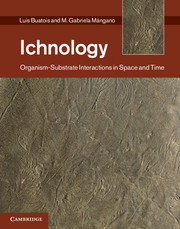Introduction
Published online by Cambridge University Press: 25 October 2011
Summary
Worms have played a more important part in the history of the world that most persons would at first suppose.
Charles Darwin The Formation of Vegetable Mould Through the Action of Worms with Observations on their Habits (1881)When looking at depositional sequences, no one gets upset when they see a ripple mark, but the presence of a few burrows frequently will divide the field party into two factions. One group falls asleep while the other group begins a lengthy discussion on phylogeny, ontogeny, nutrient upwelling, biochemistry, and the “Voyage of the Beagle”.
Jim Howard “Sedimentology and trace fossils” (1978)Jim Howard’s ironic comment elegantly illustrates both the joys and risks of practicing and communicating the science of organism–substrate interactions to a broad audience. Ichnology is a science located right at the crossroads of paleontology (and biology) and sedimentology (and stratigraphy). Trace fossils link paleontology and sedimentology in ways that most body fossils cannot achieve. In this context, ichnological investigations provide dynamic links among numerous fields. Analysis of specific ichnofaunas results in meaningful contributions to paleoecology, sedimentology, sequence stratigraphy, reservoir characterization, diagenesis, paleoclimatology, paleooceanography, biostratigraphy, evolutionary paleoecology, paleoanthropology, and archaeology. Such studies illustrate how an integrated approach that articulates ichnological information with other sources of data results in a better understanding of depositional setting, stratigraphic architecture, reservoir permeability, organism behavior, and ecosystem reconstruction and evolution. Thus, a multifaceted approach to ichnology will help bridge the gap between biologists and geologists, as well as between theoretical frameworks and applications. Because of this close link between ichnology and several other fields, we will often visit some of these neighboring disciplines in search for connections.
- Type
- Chapter
- Information
- IchnologyOrganism-Substrate Interactions in Space and Time, pp. 1 - 2Publisher: Cambridge University PressPrint publication year: 2011
- 1
- Cited by



